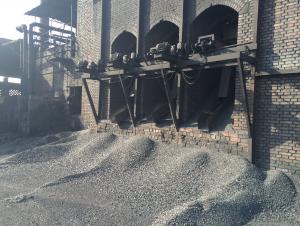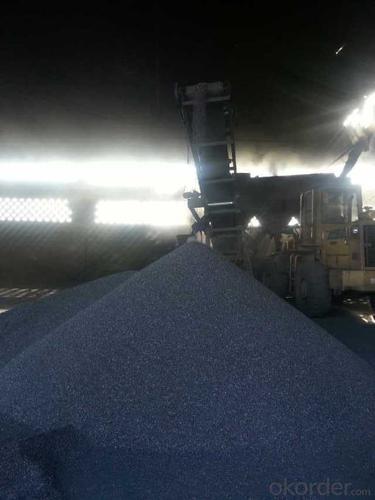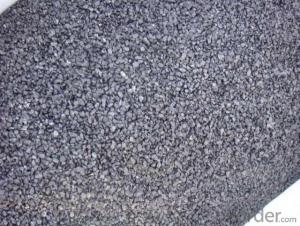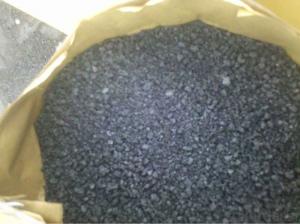Calcined Anthracite FC 94% Low Price CNBM Product
- Loading Port:
- China main port
- Payment Terms:
- TT OR LC
- Min Order Qty:
- 0 m.t.
- Supply Capability:
- 100000 m.t./month
OKorder Service Pledge
OKorder Financial Service
You Might Also Like
Packaging & Delivery
| Packaging Detail: | 25kgs/50kgs/1ton per bag or as buyer's request |
| Delivery Detail: | Within 20 days after receiving corect L/C |
Specifications
Calcined Anthracite
Fixed carbon: 90%-95%
S: 0.5% max
Size: 0-3. 3-5.3-15 or as request
Our Products:
•Feature: All of our goods are made in the best quality of world famous Tianjin. All of our products are with High carbon, Low ash, low sulphur, Low Moisture.
•Application:
The Calcined Anthracite Coal/Gas Calcined Anthracite Coal/Carbon Raiser is mainly used in steelmaking in electrical stove, screening water, shipbuilding sandblast to remove rust. It can reduce the cost of steelmaking effectively by replacing the traditional petroleum coke of carburant.Also can improve the Carbon content in steel-melting and Ductile iron foundry.
General Specification of Calcined Anthracite:
PARAMETER UNIT GUARANTEE VALUE | |||||
F.C.% | 95MIN | 94MIN | 93MIN | 92MIN | 90MIN |
ASH % | 4MAX | 5MAX | 6MAX | 7MAX | 8MAX |
V.M.% | 1 MAX | 1MAX | 1.5MAX | 1.5MAX | 1.5MAX |
SULFUR % | 0.5MAX | 0.5MAX | 0.5MAX | 0.5MAX | 0.5MAX |
MOISTURE % | 0.5MAX | 0.5MAX | 0.5MAX | 0.5MAX | 0.5MAX |
Size can be adjusted based on buyer's request.
Pictures of Calcined Anthracite:
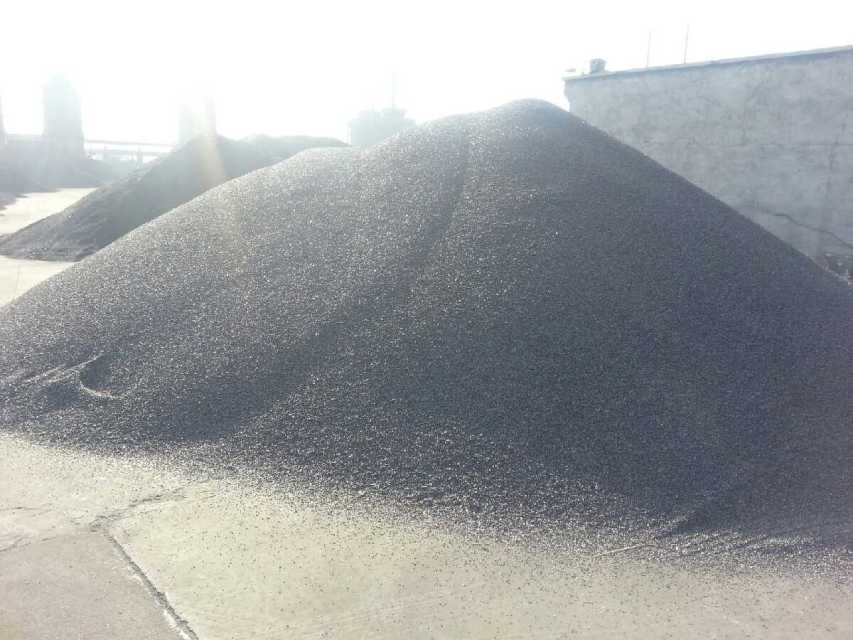
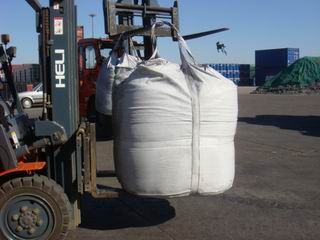
- Q: What is the role of carbon in respiration?
- The role of carbon in respiration is to serve as the primary fuel source. Carbon-containing molecules, such as glucose, are broken down during cellular respiration to release energy that can be utilized by the organism. Carbon atoms are ultimately converted into carbon dioxide, which is exhaled as a waste product.
- Q: What are the benefits of carbon-neutral technologies?
- Carbon-neutral technologies have numerous benefits that make them a vital solution in combating climate change and creating a sustainable future. Firstly, these technologies help to reduce greenhouse gas emissions, particularly carbon dioxide, which is the primary contributor to global warming. By transitioning to carbon-neutral technologies, we can significantly decrease our carbon footprint and mitigate the harmful effects of climate change. Secondly, carbon-neutral technologies promote energy efficiency and resource conservation. Many of these technologies, such as renewable energy sources like solar and wind power, harness natural resources that are infinite and readily available. This reduces our reliance on finite fossil fuels, which not only helps to protect the environment but also reduces the volatility of energy prices. Furthermore, embracing carbon-neutral technologies can lead to improved air quality and public health. Traditional energy sources like coal and oil contribute to air pollution and have detrimental health effects on humans, such as respiratory issues and cardiovascular diseases. By transitioning to cleaner technologies, we can reduce air pollution and improve the quality of life for individuals and communities. In addition, carbon-neutral technologies can stimulate economic growth and create new job opportunities. The development, installation, and maintenance of renewable energy infrastructure require skilled workers, leading to job creation and economic development. This transition can also reduce dependency on imported energy sources, leading to greater energy independence and national security. Lastly, by adopting carbon-neutral technologies, we can demonstrate global leadership and contribute to international efforts to combat climate change. Countries that embrace these technologies become role models for others and encourage global cooperation in reducing greenhouse gas emissions. In conclusion, the benefits of carbon-neutral technologies are vast and multidimensional. They not only help mitigate climate change and reduce greenhouse gas emissions but also promote energy efficiency, improve air quality, stimulate economic growth, and contribute to global efforts in creating a sustainable future.
- Q: I want to know why the ATP in the five carbon sugar is a DNA RNA??
- An adenosine ribose adenine nucleoside by connection formation.If it is deoxyribonucleic acid, it is called three phosphate adenine nucleoside, or dATP
- Q: How does carbon impact the prevalence of tropical storms?
- The prevalence of tropical storms is greatly influenced by carbon, specifically carbon dioxide (CO2) emissions. Human activities like burning fossil fuels, deforestation, and industrial processes have led to an increase in atmospheric CO2 levels, resulting in global warming. This phenomenon of rising global temperatures has various implications for the formation and intensity of tropical storms. To begin with, warmer temperatures lead to higher levels of moisture in the atmosphere due to increased evaporation of seawater. Moisture is crucial for the development and sustenance of tropical storms as it provides the necessary fuel. With more moisture available, the potential for tropical storms to form and strengthen is enhanced. Moreover, rising global temperatures cause tropical oceans to expand, providing a larger area for tropical storms to form and intensify. This expansion allows for greater energy exchange between the ocean and the atmosphere, further enhancing the potential for storm development. Additionally, elevated levels of CO2 contribute to ocean acidification, which negatively affects marine ecosystems like coral reefs. Coral reefs act as natural barriers that protect coastal areas from storm surges and waves generated by tropical storms. However, the acidification of oceans weakens and destroys these reefs, leaving coastal regions more vulnerable to storm impacts. Lastly, carbon emissions causing climate change alter atmospheric and oceanic circulation patterns, which can affect the movement and tracks of tropical storms. Changes in wind patterns and ocean currents may cause storms to deviate from their usual paths, leading to increased uncertainty and potential impacts on regions not typically prone to these events. In summary, carbon emissions and the resulting global warming have significant effects on the prevalence of tropical storms. Increased moisture content, expanded warm ocean areas, weakened coastal defenses, and altered storm tracks are all consequences of rising carbon levels, ultimately contributing to more frequent and intense tropical storms.
- Q: What is the carbon footprint?
- The carbon footprint refers to the total amount of greenhouse gases, particularly carbon dioxide (CO2), released into the atmosphere as a result of human activities. It is a measure of the impact individuals, organizations, or countries have on the environment in terms of contributing to climate change. This footprint includes direct emissions from burning fossil fuels for transportation, heating, and electricity, as well as indirect emissions from the production and transport of goods and services we consume. The carbon footprint is usually measured in units of carbon dioxide equivalent (CO2e) and is an important tool for evaluating and managing our environmental impact. By understanding and reducing our carbon footprint, we can mitigate climate change and work towards a more sustainable future.
- Q: How to distinguish carbon rods to identify carbon fishing rods?
- I'm also waiting to learn! It seems all very busy, the masters are not on-line
- Q: How does carbon affect the melting of polar ice caps?
- The connection between carbon and climate change has a direct impact on the melting of polar ice caps. When humans release carbon dioxide, a greenhouse gas primarily emitted through the burning of fossil fuels, it acts as a sort of blanket, trapping heat within the Earth's atmosphere. This trapped heat then leads to a rise in global temperatures, ultimately causing the polar ice caps to melt at an accelerated pace. As carbon dioxide is emitted into the atmosphere, it prevents the Earth's heat from escaping into space, much like a blanket would. Consequently, the overall temperature of the planet increases, resulting in the melting of glaciers and ice sheets in the polar regions. The more carbon dioxide is released, the more heat is trapped, leading to a further rise in global temperatures and a faster rate of ice melting. The consequences of the melting polar ice caps are significant. As the ice continues to melt, it contributes to the rise of sea levels, which poses a threat to coastal communities and ecosystems worldwide. Furthermore, the loss of polar ice diminishes the Earth's ability to reflect sunlight, as ice has a high albedo, or reflectivity. This means that as more ice melts and is replaced by darker ocean water or land, more sunlight is absorbed, further warming the planet and creating a positive feedback loop. Taking steps to reduce carbon emissions and address climate change is crucial in order to mitigate the melting of polar ice caps. Transitioning to renewable energy sources, improving energy efficiency, and implementing sustainable practices are some of the ways in which we can minimize carbon emissions and slow down the rate of ice melting. By taking action on carbon emissions, we can play a role in preserving the polar ice caps and lessening the devastating consequences of climate change.
- Q: How do human activities contribute to carbon emissions?
- Human activities contribute to carbon emissions in several ways. The burning of fossil fuels for electricity, transportation, and industry is one of the main sources of carbon dioxide emissions. When we burn coal, oil, or natural gas, carbon is released into the atmosphere. Additionally, deforestation and land-use changes also contribute to carbon emissions. Trees play a crucial role in absorbing carbon dioxide, so when forests are cleared for agriculture or urbanization, the stored carbon is released back into the atmosphere. Moreover, industrial processes such as cement production and chemical manufacturing also release carbon emissions. Finally, human activities like agriculture and livestock farming can produce methane, a potent greenhouse gas that contributes to global warming. Overall, our reliance on fossil fuels, deforestation, industrial processes, and certain agricultural practices all contribute to carbon emissions, exacerbating the problem of climate change.
- Q: How dnf advanced carbon ashes?
- Mall has sold, and sometimes activities, and now there is no
- Q: Helmet material: ABS composites, FRP, carbon fiber, what are the differences? How to tell good from bad?
- ABS is a kind of thermoplastic material, glass steel is called composite materials, the helmet is a large part of carbon fiber prepreg epoxy resin has high temperature and high pressure molding, glass fiber and unsaturated resin molding, strength needless to say, of course, is the best carbon fiber, the price is also the most expensive.
Send your message to us
Calcined Anthracite FC 94% Low Price CNBM Product
- Loading Port:
- China main port
- Payment Terms:
- TT OR LC
- Min Order Qty:
- 0 m.t.
- Supply Capability:
- 100000 m.t./month
OKorder Service Pledge
OKorder Financial Service
Similar products
Hot products
Hot Searches
